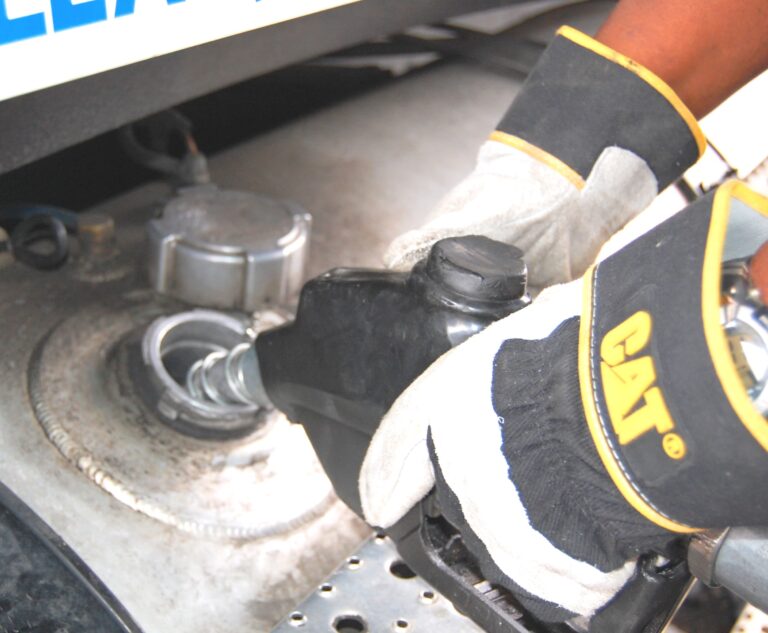How much do you want to pay for fuel? While there isn’t much that can be done about the price posted at the truck stop, you have a lot of control over how many gallons you’ll need to purchase, and how many dollars will become a minus on your business budget and a plus on someone else’s.
The numbers are telling, and can have a tremendous impact on an annual business budget. At 100,000 miles a year, not a lot for a hard-running owner, the difference between five and six miles per gallon is 3,333 gallons of fuel purchased. At the average U.S. price per gallon of $3.04, reported by the U.S. Energy Information Administration (EIA) on June 24, that’s a difference of $10,132 per year in cost.
Increase your mileage to seven MPG, and your annual savings climbs to $17,371. Granted, increasing fuel efficiency by a full MPG, or even two, is a tall order. Or, is it?
The only question is, how much potential savings do you want in your pocket instead of run through your truck’s fuel pump?
Your equipment has an impact on fuel consumption, of course. How your truck is spec’ed, from engine size to transmission, axles, gear ratios, tire size and type, and even your engine oil can make a difference in fuel consumption.
Unfortunately, it isn’t quite as easy as big engines burning more fuel than small ones. Depending on gear ratios, load hauled and terrain, a smaller engine may work harder than a large one to get the job done, burning more diesel in the process. Auto-shift transmissions get credit for saving fuel, but drivers who know how to shift manual transmissions for maximum fuel economy can do as well or, in some cases, better. It’s important that the truck be spec’ed for the intended job.
Driving technique still has a tremendous impact on fuel economy. Every time you push down on the throttle, you’re spending money. Speed raises your fuel costs, but reducing speed also increases driving time. It’s a tradeoff that every truck owner has to decide on their own. In these days of electronic logging and tight dispatches, it is sometimes necessary to drive as fast as legally, and safely, possible. On shorter trips or trips with a lot of time built in the dispatch, however, some drivers may elect to save some fuel.
In stop and go traffic, another floor pedal has an impact on fuel consumption. Each time the brake is used, fuel must be burned to regain the speed that was lost. Cycles of hard braking followed by pedal-to-the-metal acceleration waste a lot of fuel. Increased following distance allows for gentler braking and fewer miles per hour to make up. It reduces driving stress, too.
Idling is still a huge fuel waster. Visit any truck stop and you’ll find trucks idling on the fuel island or in spaces when the driver will return after a short period. Often this is done to keep the interior at a comfortable temperature, but it comes at a cost. Turn the truck off when you can.
Idling during the driver’s rest period may be necessary for comfort and effective sleep, but it’s expensive. At a gallon of fuel per hour, a 10-hour rest period can cost well over $30 in fuel. Night after night, the cost adds up. Many truck owners consider an auxiliary power unit (APU) to reduce the cost. Diesel and electrically powered options exist. Other options, like bunk heaters that use small amounts of fuel, as well as battery-powered options like fans and mattress heaters, are available.
More aerodynamic options are available than ever, too. Trailer skirts, scoops, spoilers and tails claim fuel efficiency gains of four or more percent, and a combination of two or more can easily add a half MPG to your fuel mileage. Tractor options like flow-through mudflaps, fairings and hubcaps, can add more. If you’re buying, the cost of each must be weighed against the expected return. If you’re leased to a carrier that provides the trailer, fuel efficient trailers can knock a nickel per mile or more from your fuel costs, effectively raising your per-mile compensation by that amount.
There is no single solution to high fuel costs, but by being aware of the options and driving to save fuel, truck owners can add substantially to the bottom-line of their business.
The website for the U.S. Energy Information Administration’s fuel price report, issued every Monday, is www.eia.gov/petroleum/gasdiesel.
Cliff Abbott is an experienced commercial vehicle driver and owner-operator who still holds a CDL in his home state of Alabama. In nearly 40 years in trucking, he’s been an instructor and trainer and has managed safety and recruiting operations for several carriers. Having never lost his love of the road, Cliff has written a book and hundreds of songs and has been writing for The Trucker for more than a decade.








